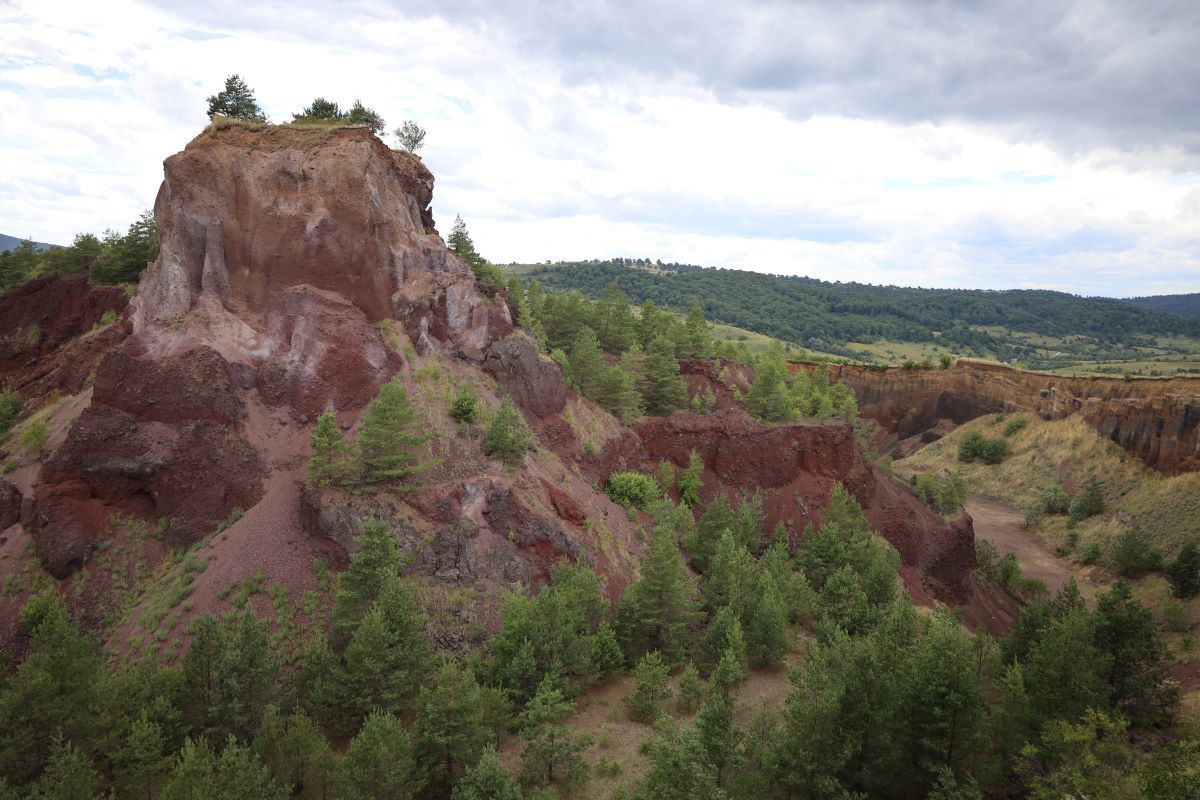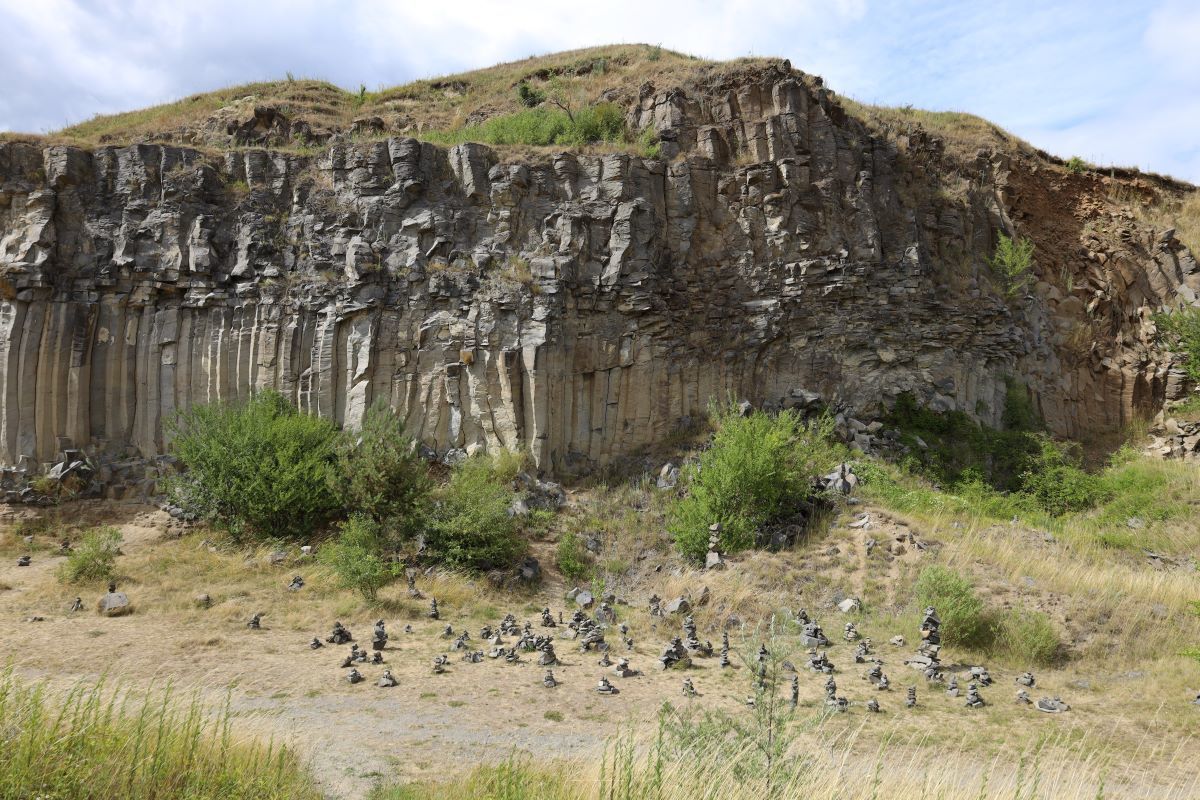
Acest geocache face parte din jocul ClimateQuest, care te va călăuzi în unele zone umede interesante din România și îți va arăta efectele schimbărilor climatice, precum și efectele intervenției umane asupra acestor habitate.
Complexul Geologic este o arie protejată de importanță națională, parte a Sitului Natura 2000 Dealurile Homoroadelor. Complexul a devenit renumit datorită urmelor activității vulcanice, care au avut loc în urmă cu mai bine de un milion de ani. În secolul al XX-lea, în zonă a avut loc exploatarea activă a carierei, care a contribuit în mare măsură la dezvoltarea imaginii actuale a peisajului.
Acest multi-cache vă ghidează către cele mai importante trei atracții ale Complexului Geologic.
Geocache-ul se află la coordonatele N 46° c.dbb E 25° 25.ab1. Cifrele care lipsesc din coordonată și care au fost înlocuite cu litere pot fi aflate răspunzând la întrebările din cele trei stații.
STAȚIA 1 (N 46° 1.684 E 25° 25.087) - Vulcanul stins de pe Dealul Hegheș

Vulcanul de pe Dealul Hegheș s-a format în urmă cu aproximativ 1,2 milioane de ani, ca urmare a unei erupții explozive. În timpul erupției, bucăți de lavă și așa-numitele bombe vulcanice au fost expulzate din conul vulcanului și s-au așezat în jurul craterului. Culoarea roșiatică a rocilor este cauzată de conținutul ridicat de fier și de oxidarea la temperaturi ridicate. Adâncitura vizibilă în crater este rezultatul exploatării zgurii.
Întrebare: În ce an a fost închisă întreaga zonă a vulcanului din cauza filmărilor din seria de filme Django? (produs de Canal+ și Sky, cu Matthias Schoenaerts în rolul principal). Suma cifrelor anului este echivalentul literei „a” din coordonatele geocache-ului.
STAȚIA 2 (N 46° 1.595 E 25° 25.485) - Coloanele de Bazalt

Un geotop este o unitate teritorială limitată spațial, cu o valoare naturală instructivă, un obiect geologic neînsuflețit, de interes din punct de vedere geologic, geomorfologic sau geoistoric. Geotopul din fața noastră păstrează memoria unei gropi de lavă sau a unui flux de lavă adânc de acum aproximativ 1,2 milioane de ani. Structura columnară a fost formată prin răcirea treptată a lavei. Puteți citi detalii interesante despre formarea Coloanelor de Bazalt pe panoul informativ.
Întrebare: În ce an au fost declarate monument al naturii Coloanele de Bazalt din Racoșul de Jos? A treia cifră a anului corespunde literei „b” din coordonatele geocache-ului.
STAȚIA 3 (N 46° 1.843 E 25° 25.524) - Lacul de Smarald (Geositul Brazi)
Lacul de Smarald din fața noastră este un lac destul de tânăr, unde la începutul anilor 2000 funcționa încă cariera de bazalt. Cu toate acestea, izvoarele, apa de ploaie și topirea zăpezii au umplut repede căldarea de bazalt și s-a creat lacul, care poate fi văzut și astăzi, și al cărui nivel al apei încă crește cu câțiva centimetri în fiecare an. În pozele de pe panoul informativ din fața ta poți observa creșterea nivelului apei de la începutul exploatării miniere până în prezent. Dacă ești curios să afli de ce apa din lac are culoare verzuie, de „smarald”, citește cu atenție descrierea de pe panou.
Întrebare: Câți ani au trecut între cea mai veche și cea mai nouă fotografie afișată pe panoul informativ? Numărul rezultat din două cifre ia locul literelor „cd” în coordonatele geocache-ului.